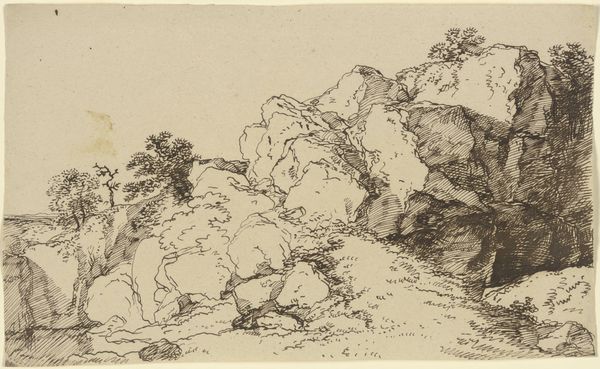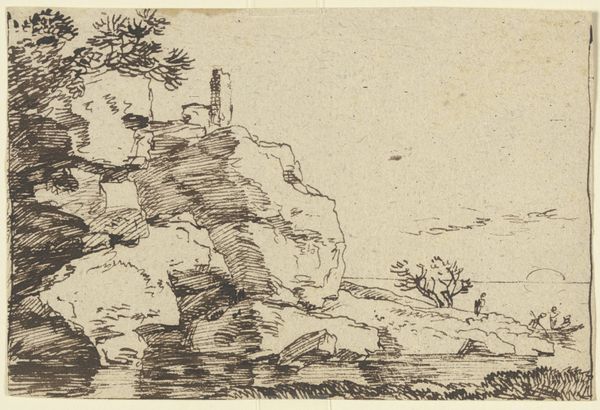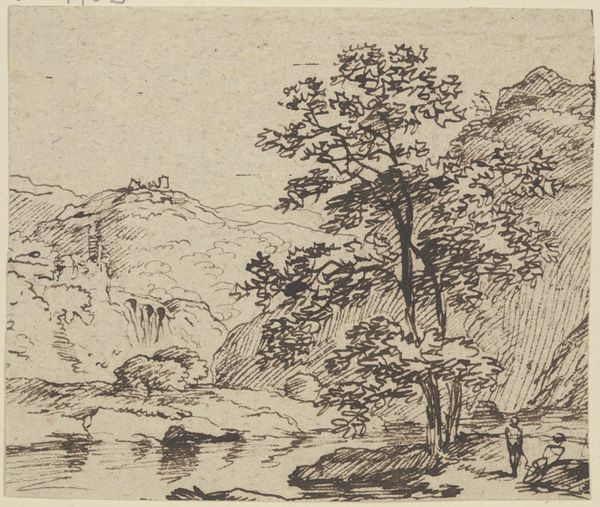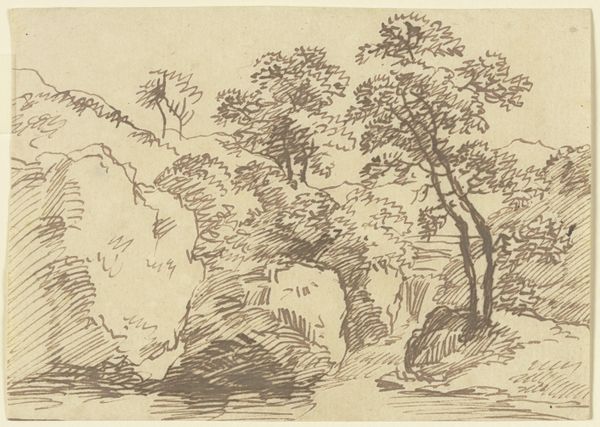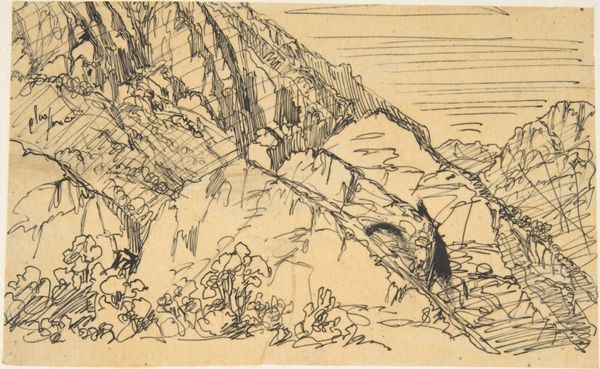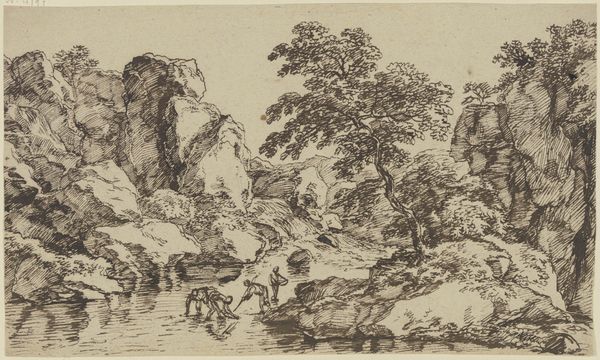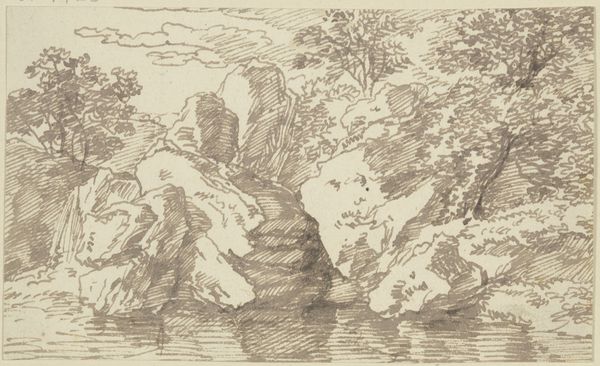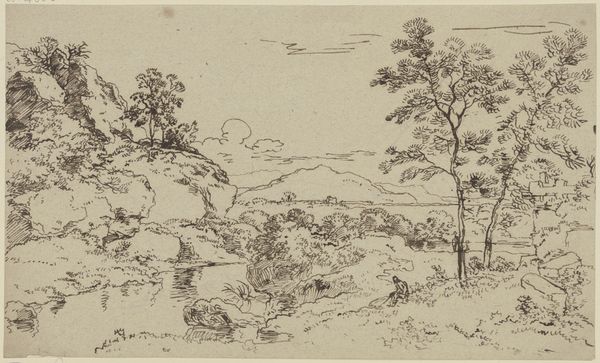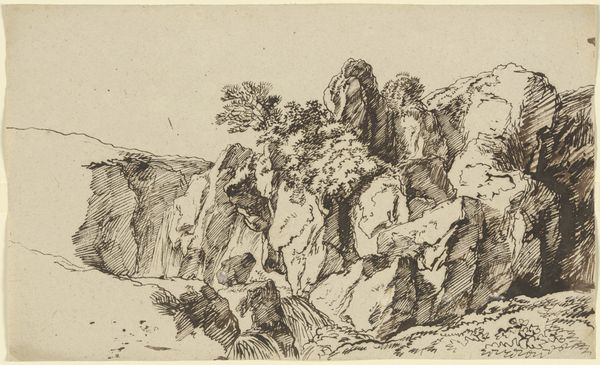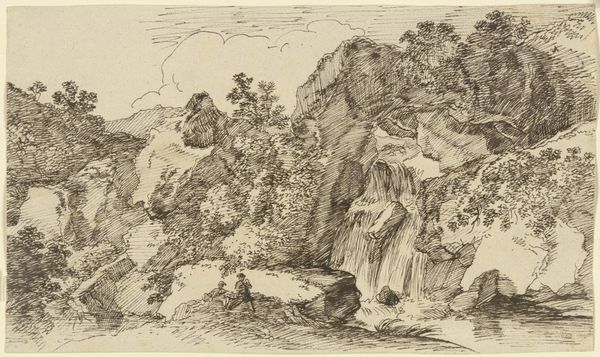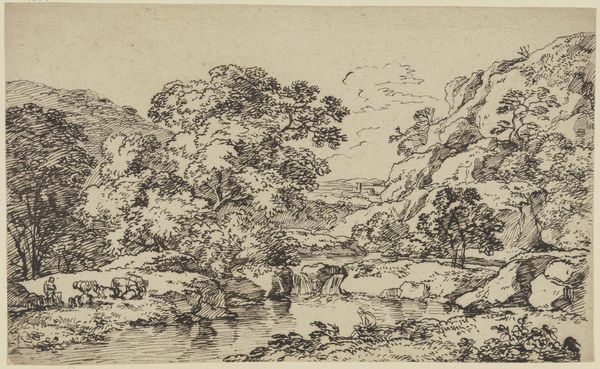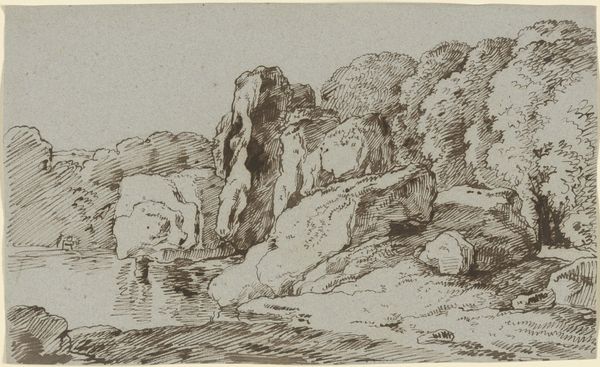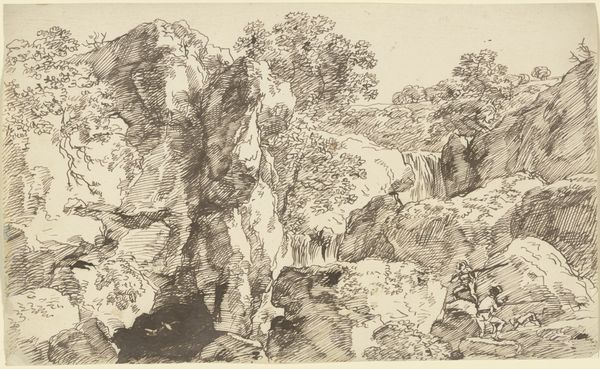
drawing, plein-air, paper, ink, frottage
#
drawing
#
plein-air
#
landscape
#
figuration
#
paper
#
personal sketchbook
#
ink
#
romanticism
#
line
#
frottage
#
realism
Copyright: Public Domain
Editor: Franz Kobell’s ink drawing, *Mountainous Landscape with Grazing Cattle*, showcases a scene composed with an almost casual realism. It feels like we are intruding on a moment. What can you tell me about the broader historical context of this type of work? Curator: Drawings like this, emphasizing direct observation of nature, reveal a shift in artistic priorities and the rising value placed on landscape. Kobell’s approach connects to the era’s emerging Romanticism, a rejection of academic art and a turn toward individualism and emotional connection with nature. Editor: So, beyond just recording what he saw, Kobell might have been making a larger statement about the importance of nature itself? Curator: Exactly! But think more specifically about who the audience for these images would have been. Landscapes gained prominence not only for their aesthetic value, but also in constructing national identity and belonging. Works like this helped foster a sense of shared space and history. Also consider that drawing “en plein air”, directly from life, became intertwined with artistic identity—demonstrating commitment to truthful representation. Editor: How would you say that museums or galleries at the time may have impacted an artist's choice in subject matter? Curator: As public museums began to open, democratizing access to art, we saw new categories and values emerge, changing what artists focused on. Prior to this, landscapes would only appear in the backgrounds of grand historical paintings or portraits. But works like Kobell's allowed ordinary citizens to see dignity and beauty in the environment, encouraging a more inclusive understanding of art and culture. This also raises the role art can play in shaping national pride and identity. Editor: That really changes my view. So much more is conveyed beyond just trees and cattle. Thanks! Curator: And thanks to you. Thinking about the interplay between artistic practice and cultural institutions deepens our understanding of art's evolving role in society.
Comments
No comments
Be the first to comment and join the conversation on the ultimate creative platform.
